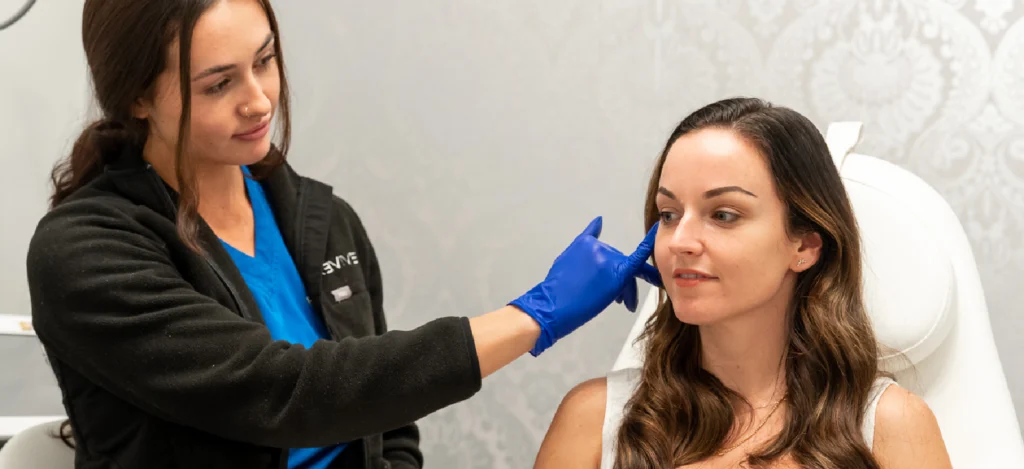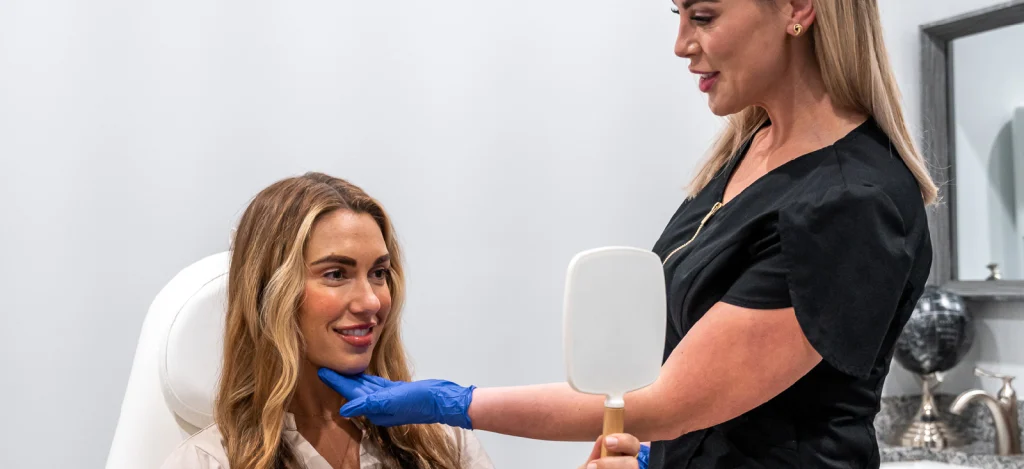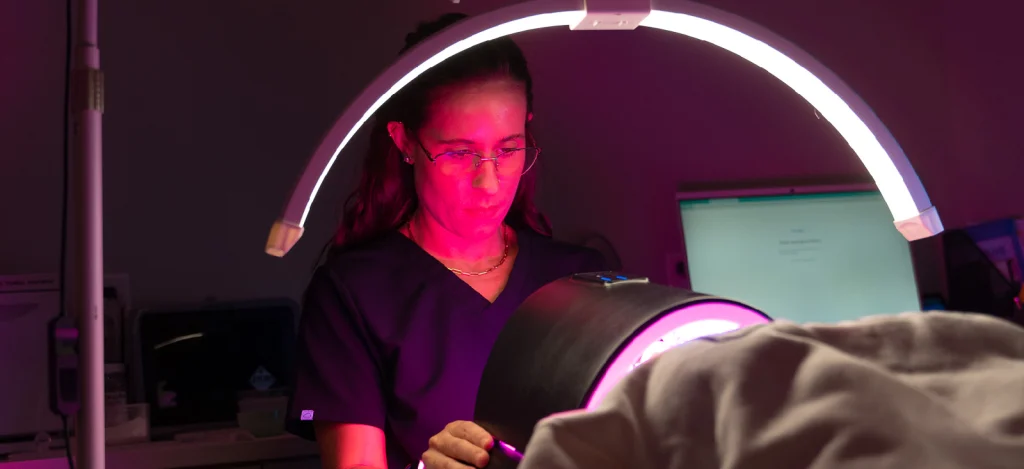Table of Contents
Introduction to UV Light Therapy
UV light therapy, also known as phototherapy, represents a revolutionary approach to holistic wellness. At Relive Hendersonville, we’re dedicated to providing our clients with access to innovative treatments that can enhance their well-being. UV light therapy is one such treatment, harnessing the power of ultraviolet light to promote healing and rejuvenation from within. In this article, we’ll explore the principles behind UV light therapy, its wide-ranging benefits, and its applications in modern healthcare. Whether you’re seeking relief from skin conditions, mood disorders, or simply aiming to optimize your overall wellness, UV light therapy offers a beacon of hope in your journey towards a healthier, more vibrant life.
Understanding UV Light Therapy
UV light therapy, also referred to as phototherapy, is a specialized treatment method that harnesses the power of ultraviolet (UV) light to address a wide range of health conditions. This therapy is grounded in the principle that exposure to specific wavelengths of UV light can trigger biological responses within the body, leading to therapeutic benefits. UV light therapy is a versatile treatment modality that encompasses various forms, including UV-A therapy, UV-B therapy, and UV-C therapy, each distinguished by its unique wavelength and therapeutic effects.
UV-A therapy primarily utilizes long-wave ultraviolet light, known as UV-A radiation, to penetrate the deeper layers of the skin. This type of UV light therapy is commonly employed in the treatment of skin conditions such as psoriasis, eczema, and vitiligo. UV-B therapy, on the other hand, focuses on medium-wave ultraviolet light, or UV-B radiation, which targets the outer layers of the skin. UV-B therapy is often utilized to address conditions like psoriasis, eczema, and dermatitis, as well as to stimulate the production of vitamin D in the body. Additionally, UV-C therapy involves short-wave ultraviolet light, or UV-C radiation, which is typically used for disinfection purposes in healthcare settings, rather than for direct therapeutic applications on the skin.
Understanding the intricacies of UV light therapy is crucial for both practitioners and patients alike. By recognizing the specific wavelengths of UV light and their corresponding therapeutic effects, individuals can gain insight into how this treatment modality can be tailored to address their unique health concerns.

How UV Light Therapy Works
UV light therapy operates on the principle that exposure to certain wavelengths of ultraviolet light can induce physiological changes within the body, leading to therapeutic effects. When the skin is exposed to UV light during therapy sessions, several biological processes are initiated, contributing to its overall efficacy.
One key mechanism through which UV light therapy exerts its effects is by stimulating the production of vitamin D in the skin. Ultraviolet B (UV-B) radiation is particularly effective in promoting the synthesis of vitamin D, which plays a crucial role in various physiological functions, including bone health, immune function, and mood regulation. By facilitating the production of vitamin D, UV light therapy helps to maintain optimal levels of this essential nutrient in the body.
Moreover, UV light therapy influences the body’s circadian rhythm, also known as the internal body clock that regulates the sleep-wake cycle and other physiological processes. Exposure to UV light, especially in the morning or early afternoon, can help synchronize the circadian rhythm, promoting wakefulness during the day and enhancing sleep quality at night.
In addition to its effects on vitamin D production and circadian rhythm regulation, UV light therapy also modulates the immune system. UV light exposure can suppress excessive immune responses, making it particularly beneficial for individuals with autoimmune conditions such as psoriasis, eczema, and vitiligo. By reducing inflammation and immune system hyperactivity, UV light therapy helps alleviate symptoms associated with these skin disorders, promoting skin healing and overall well-being.
Overall, UV light therapy harnesses the power of specific wavelengths of ultraviolet light to promote various physiological processes, including vitamin D synthesis, circadian rhythm regulation, and immune modulation. By understanding how UV light interacts with the body, individuals can appreciate the multifaceted benefits of this therapeutic modality in enhancing overall health and well-being.
Benefits of UV Light Therapy
UV light therapy offers a myriad of benefits across various aspects of health and well-being, making it a versatile treatment modality for individuals seeking holistic wellness solutions. Here are some of the key benefits of UV light therapy:
- Mood Enhancement and Mental Health: UV light therapy has been shown to have mood-enhancing effects, particularly in conditions such as seasonal affective disorder (SAD). Exposure to UV light stimulates the production of serotonin, often referred to as the “feel-good” neurotransmitter, which can help alleviate symptoms of depression and improve overall mood. By mimicking natural sunlight, UV light therapy uplifts spirits and promotes a sense of well-being, especially during the darker months of the year when sunlight exposure is limited.
- Skin Condition Management: UV light therapy is highly effective in managing various skin conditions, including psoriasis, eczema, and vitiligo. UV radiation, particularly UV-B light, penetrates the skin and slows down the rapid growth of skin cells characteristic of conditions like psoriasis. This helps reduce inflammation, itching, and the formation of plaques, leading to improved skin health and appearance. Similarly, UV light therapy can help alleviate symptoms of eczema by reducing inflammation and promoting skin healing. For individuals with vitiligo, UV light therapy can help repigment depigmented areas of the skin, restoring a more even skin tone.
- Immune System Modulation: UV light therapy exerts immunomodulatory effects, meaning it can regulate immune system activity. By exposing the skin to specific wavelengths of UV light, UV therapy can suppress overactive immune responses seen in autoimmune conditions like psoriasis and eczema. This helps reduce inflammation and skin lesions, providing relief from symptoms and promoting skin healing. Additionally, UV light therapy may enhance immune function by stimulating the production of certain immune cells, contributing to overall immune health and resilience.
- Regulation of Sleep Patterns: Exposure to UV light, particularly in the morning or early afternoon, can help regulate the body’s circadian rhythm, or internal body clock. The circadian rhythm plays a crucial role in regulating sleep-wake cycles, hormone secretion, and other physiological processes. By exposing the body to UV light during specific times of the day, UV therapy helps synchronize the circadian rhythm, promoting wakefulness during the day and enhancing sleep quality at night. This can lead to improvements in overall sleep patterns and better restorative sleep.
Conditions Treated with UV Light Therapy
UV light therapy, also known as phototherapy, is a versatile treatment modality that can effectively address a wide range of health conditions. Here are some of the key conditions treated with UV light therapy:
- Seasonal Affective Disorder (SAD): SAD is a type of depression that occurs seasonally, typically during the fall and winter months when sunlight exposure is limited. UV light therapy mimics natural sunlight and helps alleviate symptoms of SAD by regulating serotonin levels in the brain and restoring circadian rhythm balance. Regular exposure to UV light can improve mood, energy levels, and overall well-being in individuals affected by SAD.
- Psoriasis: Psoriasis is a chronic autoimmune skin condition characterized by the rapid growth of skin cells, resulting in thick, red, scaly patches on the skin. UV light therapy, particularly UV-B phototherapy, is highly effective in managing psoriasis symptoms by slowing down the excessive growth of skin cells and reducing inflammation. UV light therapy can help improve skin texture, reduce plaque formation, and alleviate itching and discomfort associated with psoriasis.
- Eczema (Atopic Dermatitis): Eczema is a common inflammatory skin condition characterized by dry, itchy, and inflamed skin patches. UV light therapy can help alleviate eczema symptoms by reducing inflammation, suppressing immune system activity, and promoting skin healing. UV phototherapy helps restore the skin barrier function, alleviate itching, and reduce the frequency and severity of eczema flare-ups, leading to improved skin health and comfort.
- Vitiligo: Vitiligo is a skin disorder characterized by the loss of skin pigment, resulting in depigmented patches or white spots on the skin. UV light therapy, particularly narrowband UV-B phototherapy, is a mainstay treatment for vitiligo. UV light stimulates melanocyte activity and promotes repigmentation of depigmented areas, helping restore skin color and texture. Regular UV light therapy sessions can lead to gradual repigmentation and improved cosmetic appearance in individuals with vitiligo.
- Depression and Anxiety: UV light therapy has been shown to have mood-enhancing effects and can help alleviate symptoms of depression and anxiety. Exposure to UV light stimulates the production of serotonin, a neurotransmitter associated with mood regulation and emotional well-being. By increasing serotonin levels in the brain, UV therapy can lift mood, reduce anxiety, and improve overall mental health in individuals experiencing depression or anxiety disorders.
- Sleep Disorders: UV light therapy can help regulate sleep patterns and improve sleep quality in individuals with sleep disorders such as insomnia or circadian rhythm disorders. Exposure to UV light during specific times of the day, particularly in the morning or early afternoon, helps synchronize the body’s internal clock and promote wakefulness during the day. By regulating the circadian rhythm, UV therapy can enhance sleep onset, duration, and quality, leading to better restorative sleep and overall well-being.

Safety Considerations
UV light therapy is generally safe when administered properly, but it’s essential to consider safety precautions to minimize potential risks and side effects. Here are some safety considerations to keep in mind when undergoing UV light therapy:
- Protective Eyewear: During the therapy sessions, it’s crucial to wear protective eyewear to shield your eyes from harmful UV radiation. Prolonged exposure to UV light can increase the risk of eye damage, including cataracts and corneal damage. Specialized goggles or glasses designed for UV protection should be worn to ensure the safety of your eyes during treatment.
- Skin Protection: To prevent sunburn and skin irritation, it’s essential to protect exposed skin areas that are not undergoing treatment. Apply a broad-spectrum sunscreen with a high SPF to shield your skin from UV radiation. Additionally, covering sensitive areas of the skin with clothing or a towel can provide an extra layer of protection against UV exposure.
- Follow Recommended Exposure Times: The therapy sessions should be conducted according to recommended exposure times and frequency guidelines. Overexposure to UV radiation can increase the risk of sunburn, skin damage, and other adverse effects. Your healthcare provider will determine the appropriate duration and intensity of UV therapy based on your individual needs and skin sensitivity.
- Skin Sensitivity Assessment: Before starting the therapy, your healthcare provider will assess your skin sensitivity to determine the optimal treatment parameters. Individuals with fair or sensitive skin may require shorter exposure times or lower intensity levels to minimize the risk of skin irritation. It’s essential to communicate any concerns or discomfort during treatment to ensure adjustments can be made accordingly.
- Monitor for Side Effects: While undergoing therapy, it’s essential to monitor your skin for any signs of adverse reactions or side effects. Common side effects may include redness, itching, dryness, or irritation, which are usually mild and temporary. However, if you experience severe or prolonged side effects, such as blistering or burning, discontinue treatment and consult your healthcare provider immediately.
- Hydration and Skin Care: Stay hydrated and moisturize your skin regularly to maintain skin health and minimize dryness or irritation associated with the therapy. Drinking plenty of water and using gentle, hydrating skincare products can help soothe the skin and enhance treatment outcomes.
By following these safety considerations and guidelines, you can enjoy the benefits of the therapy while minimizing potential risks and ensuring a safe and effective treatment experience. Always consult with a qualified healthcare provider before starting UV therapy to determine if it’s suitable for your individual needs and health condition.
UV Light Therapy Devices
UV light therapy devices come in various forms, from handheld devices for home use to clinical-grade machines used in medical settings. Popular brands and models offer different features and functionalities, catering to diverse user needs and preferences.

Incorporating UV Light Therapy into Your Wellness Routine
Incorporating UV light therapy into your wellness routine can be a beneficial addition to your overall health regimen. Here’s how you can integrate UV light therapy effectively:
- Consultation with a Healthcare Professional: Before starting UV light therapy, it’s essential to consult with a qualified healthcare professional, such as a dermatologist or phototherapy specialist. During your consultation, your healthcare provider will evaluate your medical history, skin condition, and overall health to determine if it is suitable for you. They will also discuss your wellness goals and develop a personalized treatment plan tailored to your needs.
- Personalized Treatment Plan: Based on your consultation, your healthcare provider will create a personalized treatment plan that outlines the frequency, duration, and intensity of UV light exposure needed to achieve optimal results. The treatment plan will take into account factors such as your skin type, sensitivity, and specific health concerns. Your provider will also educate you on how to safely and effectively perform UV light therapy at home or in a clinical setting.
- Selecting the Right Device: There are various UV light therapy devices available, including handheld devices, light boxes, and full-body panels. Your healthcare provider will recommend the most suitable device based on your treatment goals and preferences. Handheld devices are convenient for targeted treatment of specific areas, while light boxes and panels are ideal for broader exposure or full-body treatments.
- Establishing a Routine: Once you’ve received guidance from your healthcare provider, establish a consistent routine for the therapy sessions. Determine the best time of day for treatment based on your schedule and lifestyle. Some people prefer morning sessions to energize and invigorate their day, while others may opt for evening sessions to unwind and relax before bedtime.
- Monitor Progress and Adjustments: As you incorporate it into your wellness routine, it’s essential to monitor your progress and any changes in your skin condition or overall well-being. Keep track of your treatment sessions, noting any improvements or concerns. Communicate regularly with your healthcare provider to discuss any adjustments needed to your treatment plan based on your response to therapy.
- Complementing with Skincare and Lifestyle Practices: Alongside UV light therapy, maintain a comprehensive skincare routine and adopt healthy lifestyle practices to optimize your wellness journey. Use gentle skincare products that support skin health and hydration, and protect your skin from excessive sun exposure. Incorporate stress management techniques, regular exercise, and a balanced diet to enhance the benefits of the therapy and promote overall well-being.
By following these steps and working closely with your healthcare provider, you can effectively incorporate it into your wellness routine to support skin health, mood regulation, and overall vitality. Always prioritize safety and consult with a healthcare professional for personalized guidance and recommendations tailored to your specific needs and goals.
Future Directions and Innovations
The future of UV light therapy holds promising advancements in technology and applications. Ongoing research aims to enhance treatment efficacy, optimize safety profiles, and explore novel uses of UV light therapy in other fields of medicine.
FAQS
- What is UV light therapy, and how does it work?
- UV light therapy, also known as phototherapy, involves exposure to ultraviolet light to stimulate healing and wellness. At Relive Hendersonville, UV light therapy is administered using specialized devices that emit controlled doses of UV light. This light penetrates the skin, activating biochemical processes that promote healing, regulate mood, and improve overall well-being.
- What conditions can UV light therapy treat?
- It is effective in treating a range of conditions, including seasonal affective disorder (SAD), psoriasis, eczema, vitiligo, and sleep disorders. It can also help regulate circadian rhythms, boost vitamin D production, and improve mood and energy levels. At Relive Hendersonville, our experienced healthcare professionals tailor UV light therapy treatments to address individual needs and wellness goals.
- Is UV light therapy safe?
- When administered by trained professionals, UV light therapy is considered safe and effective for treating various conditions. However, it’s essential to undergo therapy under medical supervision to ensure proper dosing and minimize the risk of side effects. Our team at Relive Hendersonville prioritizes patient safety and closely monitors each session to optimize treatment outcomes while prioritizing your well-being.
Conclusion
UV light therapy at Relive Hendersonville offers a beacon of hope for those seeking holistic wellness solutions. By harnessing the power of UV light, you can illuminate your path to better health and vitality. Explore the transformative benefits of UV light therapy and embark on a journey towards radiant well-being.

